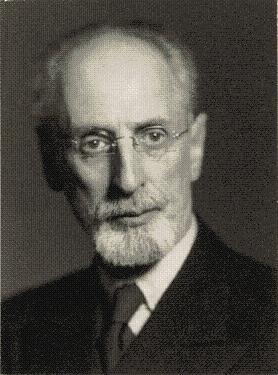Encyclopedia, Difference between revisions of "Eli Heckscher" - New World
(fixed) |
(started) |
||
| Line 1: | Line 1: | ||
| − | {{Claimed}} | + | {{Claimed}}{{Started}} |
[[Category:Politics and social sciences]] | [[Category:Politics and social sciences]] | ||
[[Category:Biography]] | [[Category:Biography]] | ||
[[Category:Economics]] | [[Category:Economics]] | ||
| − | |||
| − | |||
{{epname}} | {{epname}} | ||
Revision as of 21:42, 9 July 2007
Eli Filip Heckscher (Stockholm November 24, 1879 - Stockholm December 23, 1952) was a Swedish political economist and economic historian.
Heckscher was born in Stockholm into a prominent Jewish family, son of the Danish-born businessman Isidor Heckscher and his spouse Rosa Meyer, and completed his secondary education there in 1897. He studied at university in Uppsala and Gothenburg, completing his PhD in Uppsala in 1907. He was professor of Political economy and Statistics at the Stockholm School of Economics from 1909 until 1929, when he exchanged that chair for a research professorship in economic history, finally retiring as emeritus professor in 1945.
According to a bibliography published in 1950, Heckscher had as of the previous year published 1148 books and articles, among which may be mentioned his study of Mercantilism, translated into several languages, and a monumental Economic history of Sweden in several volumes. Heckscher is best known for a model explaining patterns in international trade that he developed with Bertil Ohlin.
Eli Heckscher's son was Gunnar Heckscher (1909-1987), political scientist and leader of what later became Moderate Party 1961-1965. His grandson, however, is Social Democratic politician Sten Heckscher.
Reference
- Bertil Ohlin, "Heckscher, Eli Filip," Svenskt biografiskt lexikon, vol. 18, pp. 376-381.
Further Reading
- Eli Heckscher, International Trade, and Economic History, Findlay, Ronald, Rolf G. H. Henriksson, Håkan Lindgren and Mats Lundahl, eds., The MIT Press, 2007.
Credits
New World Encyclopedia writers and editors rewrote and completed the Wikipedia article in accordance with New World Encyclopedia standards. This article abides by terms of the Creative Commons CC-by-sa 3.0 License (CC-by-sa), which may be used and disseminated with proper attribution. Credit is due under the terms of this license that can reference both the New World Encyclopedia contributors and the selfless volunteer contributors of the Wikimedia Foundation. To cite this article click here for a list of acceptable citing formats.The history of earlier contributions by wikipedians is accessible to researchers here:
The history of this article since it was imported to New World Encyclopedia:
Note: Some restrictions may apply to use of individual images which are separately licensed.
